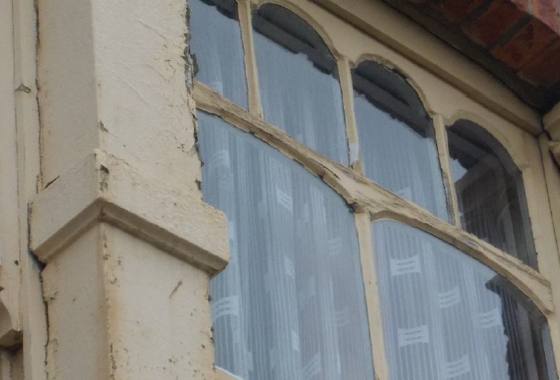
29 Sep, 2012/ by Surveyor Local /News
Wet rot is usually associated with neglect or poor detailing in buildings, occurring in timbers which are continually wet, or having persistent moisture content in excess of around 20%. This can be caused by leaking roofs, joinery exposed to the elements (as was the case in this property) or dampness caused by poor insulation or ventilation.
In this case, the house was located in a conservation area, and had several particularly attractive sash window frames. Up close, however, it was obvious that the timber of these window frames was suffering from wet rot as a result of poor maintenance. A suitable coating or paint should be regularly applied to ensure the wood of the external frame is not directly exposed to rainwater and moist conditions. The surveyor of this home believed that a fresh coat had not been applied in some time, and that the paint used in the most recent job was not suitable for outdoor use.
As a result, the timber had rotted, and in some cases, severely. In his report, the surveyor recommended that the frames be replaced entirely. Although a new coat of an appropriate paint would halt further decay, the deterioration was already well advanced. He also noted that, given the house's location in a conservation area, any future owner may have to confirm with the local authority that replacement windows were suitable, but that the buyer would need to discuss this with their solicitor.
Wet rot can occur internal as well as external timber. In addition to joinery exposed to the weather, areas particularly at risk also include floors beneath leaking sanitary fittings. When the source of damp has been eliminated, further rot damage should not occur. Wherever wet rot is found, affected sections should be cut and replaced with sound, preservative-treated material. Evidence of such a repair was found on the external window sill in the room adjacent to the kitchen, which the surveyor also mentioned in his report, confirming that in the case of this window, no further repairs were required.
